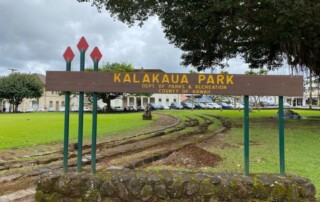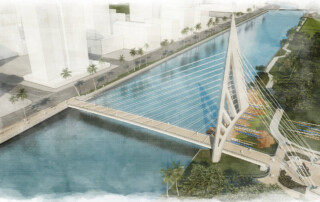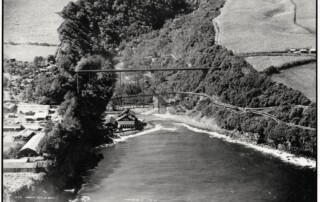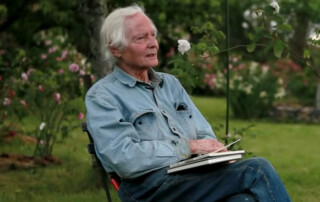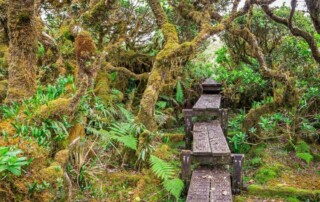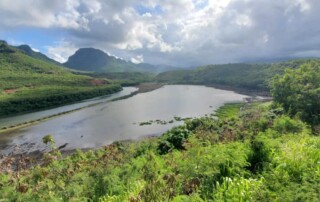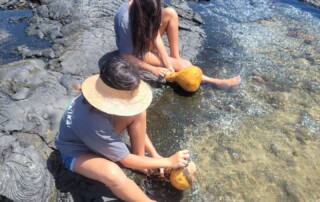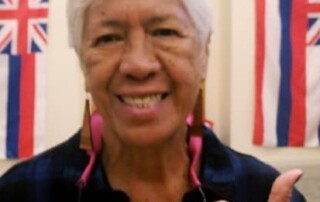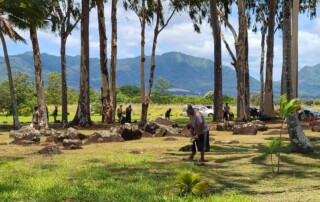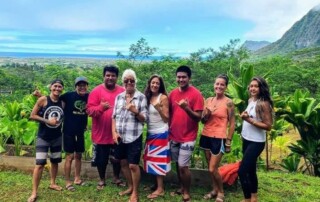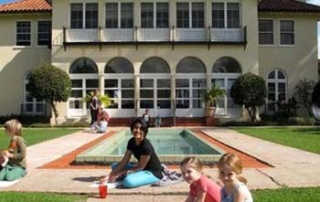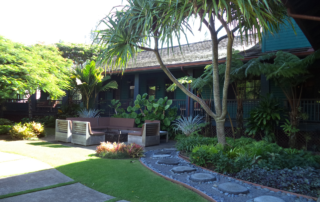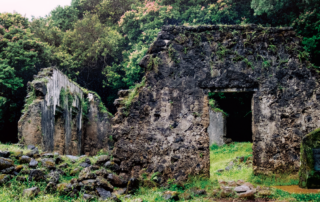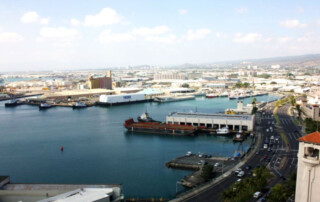Kalākaua Park Restores Original Landscape Design
Kalākaua Park on Hawai‘i Island has served as Hilo’s town square since it was dedicated in 1877 by King David Kalākaua. A recent project restored the historic stonework that defines the amphitheater and brought back key elements of the landscape design. Working on the path restoration. The park contains several historic features, including the stone-lined tiers of the amphitheater that was installed in the 1930s. Over time, the stones have settled, been covered by lawn and maintenance ramps, or have been dislodged. The disrepair made the space less inviting and usable. Other historic features of the park include the original shade trees, said to have been planted by Kalākaua himself. A sundial donated by the King also helped the people of Hilo set their watches for decades. A pond and marble monument honor community members who died in World War II, the Korean War and Vietnam. The park is surrounded by historic buildings, including the Federal Building, the former courthouse and police station (now the East Hawai‘i Cultural Center) and the Hawaiian Telephone Company. On April 26, the restoration work began with a blessing of the place, crew and tools. Work had progressed enough to allow the traditional May Day festivities and rededication of the park on May 1. Work continued through the month, with a closing blessing on May 26. “The park looks stunning and is admired by a great many old timers who remember how it looked before, and great many newcomers who appreciate the strong design lines of the Thompson landscape design firm,” said Cannon-Eger. During the course of the project, the crews found a previously unknown line of stones under one of the terraces. The cut stones were different [...]


